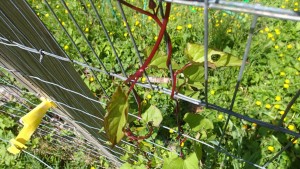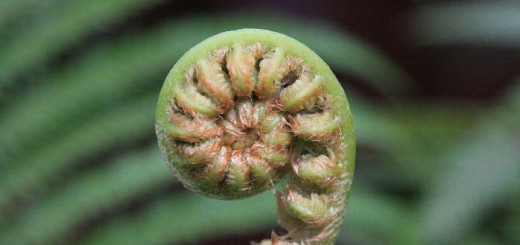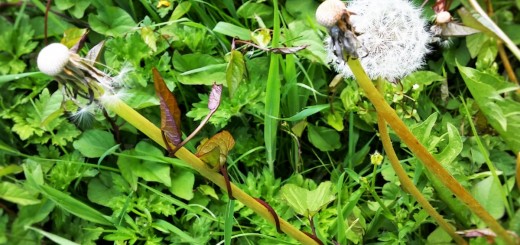Wrapping Things Up – Thigmotropic Movement
A thigmotropic response is when a plant will generally change in form when stimulated mechanically. These movements and growths can even be influenced depending on the direction of the stimulus. A part of some plants that tend to be especially demonstrative of this are tendrils.
Tendrils are usually utilized by plants as a means of support; securing themselves unto objects in their surroundings to gain higher ground easier. They are highly touch sensitive, and can respond to stimuli as little as 250 µg, which is much much beyond the touch sensitivity of human skin. Upon responding to stimulus, they quickly exhibit differential growth, leading to coiling around whatever directed the touch (Gilroy, Mason). The side of the tendril that receives contact compresses while sometimes the other side expands (Hind). This means that the side opposite that was touched, grows faster than the other and thus ‘curls’ the plant tendril. There is also ” rapid contact coiling” in contrast to the differential growth in which the cells compress and expand in a similar way, but much more quickly and in a more permanent manner (Stefan). Interestingly, it is not just the point that which is touched that coils, but along the whole length which suggests that a signal is spread throughout parts of the plant. Not too much is known about thigmotropic movements and how it works on a molecular level although studies suggest the primary agent behind the transmission of the stimulus to be auxin, which is a hormone commonly associated with coordinating plant growth and behaviors (Reinhold).

Bindweed curling around fence.
Some plants that demonstrate this kind of trait include Hops, Bindweed, Morning Glory, and Pea plants all belonging to the phylum tracheophyta and and are all eudicots. Essentially plants with the aforementioned tendrils will commonly will be associated with this movement.
Thigmotropic movement is also observable in plants’ roots. They will actively grow away from obstructions and follow the path of least resistance in the soil, making them “negatively thigmotropic” (Stefan). Sometimes the drive for roots to grow downward with gravity is overshadowed when coming into contact with something and reverting to a negatively thigmotropic response.
Gilroy, Simon, and Patrick H. Masson. Plant Tropisms. Ames, IA: Blackwell Pub., 2008. Print.
Hind, Julian. “Thigmotropism of a Morning Glory Plant.”
http://biology.kenyon.edu/edwards/project/steffan/b45sv.htm, Stefan Vartanian
Reinhold, Leonora, Tsvi Sachs, and Lea Vislovska. “The role of auxin in thigmotropism.” Plant Growth Substances 1970. Springer Berlin Heidelberg, 1972. 731-737.



